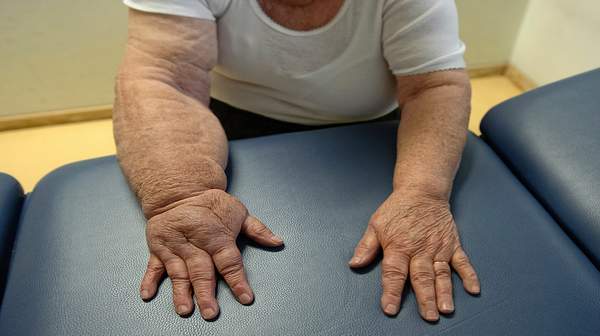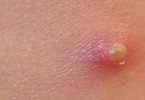What's in this article?
Even though they are two different conditions, patients, as well as doctors, often confuse lipedema and lymphedema. It is clear why this happens so often because both illnesses do have similar manifestations on the body. However, if you take a closer look, you will be able to spot the dissimilarities.
What is Lipedema?
At a first glance, lipedema can be connected with obesity. It usually occurs on legs, hips, or buttocks and the main characteristic is the uneven distribution of the fat underneath the skin. On the other hand, there are a couple of instances where lipedema appeared on arms and upper body. Lipedema occurs among females only. As a matter of fact, 11% of women around the world have this problem. The skin itself will look uneven so it might not be aesthetically pleasing to the women suffering from this condition.
Lipedema can manifest itself during or after puberty and it is closely related to the production of the hormones. Doctors also noticed that it sometimes runs in the family so if the women around you have this condition, there might be a chance that you can inherit it as well. Also keep in mind that it can slowly appear after pregnancies or surgical procedures, as well as during menopause when the hormones are going through a major change.
If your limbs are slightly larger than the rest of your body and you have noticed that your skin seems rubbery with tiny bumps which you can feel underneath your fingers, you might have lipedema. Also, keep a close eye on how easily you bruise in the area which is swollen. If your skin starts changing colors as soon as you hit something, it is a cause for concern.
What is Lymphedema?
Lymphedema has slightly different symptoms than lipedema and a major distinction is the fact that the swelling typically occurs in only one limb. Surely, it can develop in both legs and arms, but it is not so common. It rarely appears before or during puberty but it can hit all age groups too.
Just like the name suggests, it is related to your lymph nodes. There are two types of lymphedema – primary and secondary. Secondary lymphedema usually appears after removal or any type of injury to this organ. Patients who are going through cancer treatments have a bigger chance of suffering from lymphedema because lymph nodes are in charge of your immune system which is weakened after these procedures.
Cancer patients might have a blockage in their system which will not allow the lymph fluid to circulate properly. Therefore, it will start building up in your extremities, eventually leading to swelling. Scientists are still working on the solution to this conditions but if you notice it in time, it can be easily managed with proper care routines.
The cause of primary lymphedema is still a mystery and it can appear in newborns or toddlers, as well as in teenagers and fully grown adults. It is most certainly not related to chemotherapy or heavy medications.
What is the Differences between Lipedema and Lymphedema?
Since these two conditions are so similar, misdiagnosis is not unusual. It is important to know that lipedema always appears in both limbs. Lymphedema usually occurs in only one limb but it can affect both as well. Therefore, the doctors might be confused by this and give you a wrong diagnosis.
Lipedema is not connected to lymph nodes, but primary lymphedema has no evident cause so it might perplex your doctor. However, if primary lymphedema appears in both limbs, they will not be symmetrical as in lipedema.
Here is a table which will help you make a correct assessment of your condition:
| Lipedema | Lymphedema | |
| Occurs in both limbs | Always | Usually not |
| Symmetrical | Yes | No |
| Stemmer sign | Negative | Positive |
| Limbs are painful to touch | Yes | No |
| Influenced by hormones | Yes | No |
| Tissue is easy to bruise | Yes | No |
| Swelling of the feet | No | Yes |
How to treat Lipedema?
Lipedema can cause you a lot of problems when you leave it untreated. If you are already overweight, it is recommended that you start taking a good care of your body and include a daily exercise regimen. It might not reduce the swelling but it will do wonders for your whole organism as well as boost your metabolism. Of course, there are methods that will help you with lipedema:
- Compressing the area: It is important to keep the affected area under pressure so the fluids can drain and remain out of your limbs. Compression socks, panty hose, or bandages will be a good ally.
- Massages: Even though it is more suitable for treating lymphedema, manual lymphatic drainage will activate the flow in your limbs and drain the affected area. It will also help you if the tissue is painful to touch.
- Liposuction: It might sound like a radical idea but liposuction is a standard procedure nowadays that can remove the fat build up underneath the outer layer of your skin. If you are feeling very self-conscious about the visual appearance of your legs, liposuction will remove the bumps, fat, and any blocks underneath.
How to treat lymphedema?
Lymphedema is not curable so finding a solution is quite tricky. However, there are many ways that will help you reduce the swelling and make you feel better overall.
- Exercising: Start to move the affected limb every day and you will notice that the lymph fluid will start draining from it. Light exercise will activate the draining process which will lessen the swelling.
- Bandages: If you wrap a bandage tightly around the affected area, it will make the lymph fluid move towards the core of your body which will reduce the pressure. It might take some practice in order to get the process right but bandages are a great way to treat lymphedema.
- Manual lymphatic drainage: As previously mentioned, manual lymphatic drainage will remove the lymph fluid and drain the area properly. Anyone can use this technique so don’t hesitate if you are still going through your cancer treatment.






Leave a Comment